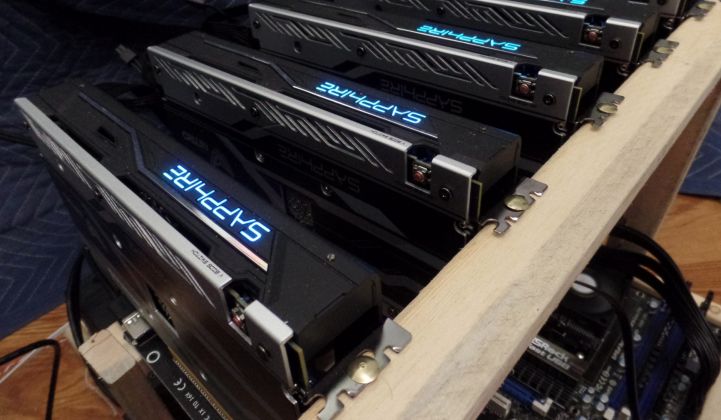The United Nations is supporting a startup that aims to get rid of the carbon footprint produced by blockchains — by using a blockchain.
Carbon Grid Protocol, owned by the Singapore-based New Era Energy, has developed a blockchain-based framework that is intended to help other blockchain players offset emissions. In the case of bitcoin, these are estimated to equal more than 500 kilos of carbon dioxide per transaction.
New Era Energy is planning to open up carbon credit markets by making them more transparent and accountable, while removing the need for intermediaries such as brokers or funds.
“We are trying to enable a per-transaction offset mechanism,” said co-founder and CEO Andy Tan, an executive with financial services and tech industry experience. “That can happen if we are able to track each transaction.”
Although the Carbon Grid Protocol could be used to offset the carbon emissions of almost any kind of business, New Era Energy is initially targeting blockchain firms because each transaction is easy to track and tends to have a relatively high footprint.
This is the case with bitcoin, which is believed to require more than a megawatt-hour of electricity per transaction, according to the Digiconomist Bitcoin Energy Consumption Index. This gives the cryptocurrency an annual energy consumption similar to that of Chile.
But even Ethereum, which is far more carbon-friendly than bitcoin, uses 78 kilowatts per transaction, giving it a higher annual energy consumption than Iceland.
Like bitcoin, the level of emissions associated with each Ethereum transaction depends on where the proof of work to validate transactions is being carried out. Currently, Ethereum averages about 35 kilos of carbon per transaction, Tan said.
“There is a very big inherent need” for blockchain companies to decarbonize transactions, he said. “And they are already on the blockchain, so it’s easy for us to pool all this data.”
New Era Energy is hoping blockchain users, project owners and protocol operators will all be keen to offset emissions. If they do, a portion of the fees on transactions will go to pay carbon credits and cover New Era Energy’s costs, said Tan.
The Carbon Grid Protocol is the first project out of Asia to be part of the Climate Chain Coalition, a blockchain initiative supported by the United Nations Framework Convention on Climate Change, he said.
New Era Energy is looking to recruit other members of the Climate Chain Coalition to pilot the offsetting concept, Tan said. The coalition includes more than 30 members, around half of which are already using blockchains, he said.
There is an expectation that corporate social responsibility, environmental, social and governance factors will creep up the management agenda within mature blockchain companies striving for corporate credibility to attract institutional investors, the CEO noted.
A Carbon Grid Protocol pilot will be out “very soon,” he said.
The pilot will use the Ethereum blockchain, which means the Carbon Grid Protocol’s costs will have to cover New Era Energy’s own transaction offsets. In time, though, New Era Energy hopes to develop its own low-carbon blockchain.
While New Era Energy may be unique in having caught the eye of the United Nations in Asia, Tan admitted it was far from the only blockchain company looking to build a business on carbon credits.
Another is Verdium Labs, which announced a partnership with IBM in May this year.
Climatecoin is another startup working on carbon offsets.
“In the carbon credit sector, there is lots of space for such applications,” said François Sonnet, co-founder of the blockchain technology developer ElectriCChain.




